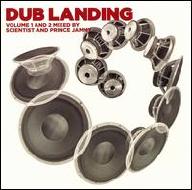Born in 1947 in Montego Bay, Jamaica, Lloyd James eventually moved to Kingston, the subsequent epicenter of reggae. He took to music at a young age and, like his future mentor, Osbourne Ruddock (aka King Tubby), displayed an early understanding of electronics, allowing him to furbish his own sound system with tailor-made equipment. Members of the local Waterhouse scene took note (including Tubby), and many began employing Jammy's services.
Following a brief spell in Canada, Jammy returned to Jamaica for good. In 1976, he replaced Prince Philip Smart at Tubby's Waterhouse studio when Smart headed for New York. Jammy's new position meant that he was able to get his hands on some of the finest roots reggae of the era, mixing classic rhythms by the likes of Vivian Yabby You Jackson and Bunny Striker Lee, the results typically appearing as the version sides of various 45s. Just a year after his tenure with Tubby began, Jammy found himself mixing the lion's share of the rhythms passing through the studio at 18 Dromilly Avenue. Bunny Lee was particularly impressed with Jammy's mastery of the equipment, employing the young engineer's skills almost exclusively.
In 1977, Jammy was enlisted to mix the dub counterpart to In the Light, Everton DaSilva's classic production for Horace Andy. The versions Jammy concocted simultaneously proved that he was well versed in the techniques acquired from Tubby and that he had developed a distinct mixing voice of his own. That same year, he made his first notable venture into production work, recording the debut of Black Uhuru, a young vocal trio from Kingston. The resulting Love Crisis (and its remixed incarnation, Black Sounds of Freedom) represented a breakthrough for both parties. Jammy then continued his dub explorations, mixing the bulk of the Black Uhuru tracks for his excellent Jammy's in Lion Dub Style set. Further productions followed, including hit albums (and singles) for emerging dancehall artists like Half Pint (Money Man Skank and One in a Million) and Junior Reid (Boom Shack a Lack). As the '80s dawned, Greensleeves released the Big Showdown set: a fictional dub battle between Jammy and Tubby's former colleague, Hopeton Scientist Brown.
1985 saw Jammy making his biggest single contribution to music yet. That year, his Super Power sound system met the Black Scorpio set for a popular sound clash. In the heat of the battle, Jammy delivered his production. With the exception of Wayne Smith's dancehall vocal, every element of the monumental Under Me Sleng Teng was digital. It served as the final blow, subsequently changing the course of reggae itself. Producers scrambled in an attempt to capitalize on the hit with versions of their own, and the ragga era had begun. In the mold of the one-rhythm albums then in vogue, Jammy released an entire set of Sleng Teng versions on his own dubbed Sleng Teng Extravaganza. Similar one-rhythm collections followed, with Jammy reworking single tracks for Ten to One (Tempo), DJ Confrontation (Agony), Further East, Vol. 1 (Tune In), and Superstar Hit Parade (Come Again).
Jammy continued to produce and record into the '90s, a decade that would see his own son, John John, emerging as a successful record-maker. Perhaps more importantly, the '90s also witnessed a number of reissues of Jammy's classic mixing work. London's Blood and Fire produced Dub Gone Crazy and Dub Gone 2 Crazy, compiling versions the Waterhouse team (Tubby, Jammy, Scientist, and Smart) mixed for Bunny Lee during the late '70s, while Pressure Sounds' The Crowning of Prince Jammy drew from the same period. RAS Records' three-volume A Man and His Music series focused on the '80s, by which time the former Prince Jammy had been dubbed King Jammy. Long overdue, these sets cemented the Prince Jammy legacy. ~ Nathan Bush, Rovi


















